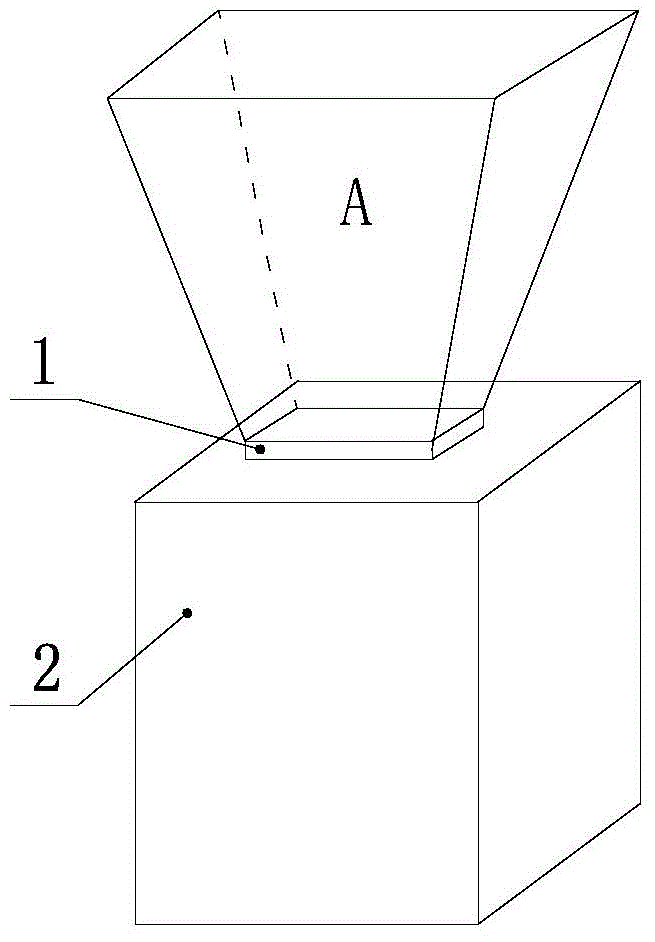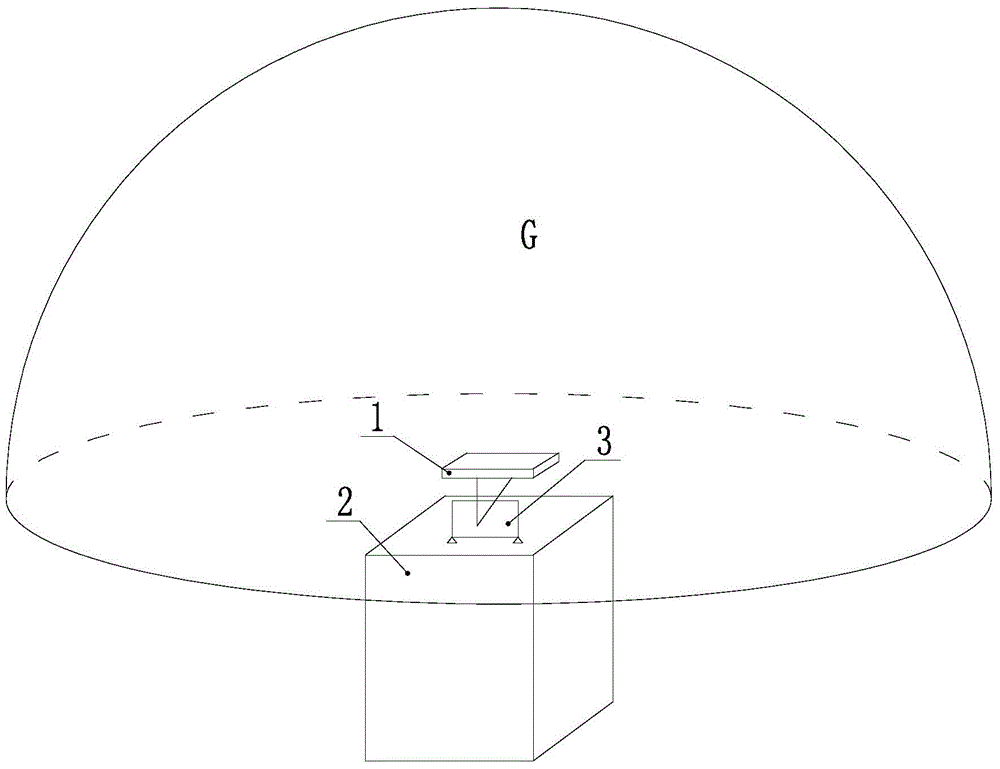A method for tracking and detecting x-ray pulsars
A tracking and detection, pulsar technology, applied in the aerospace field, can solve the problems of long capture cycle time, poor single-star orbit determination geometry, and immature technology, so as to improve the capture range and tracking accuracy, and improve the capture work. performance, overcoming the effect of limited detection range
- Summary
- Abstract
- Description
- Claims
- Application Information
AI Technical Summary
Problems solved by technology
Method used
Image
Examples
Embodiment 1
[0050] This embodiment is a method for tracking and detecting X-ray pulsars, including:
[0051] 1. The detector 1 is installed on the attitude adjustment device 3 with the function of turning and pitching, and the attitude adjustment device 3 is fixed on the spacecraft 2;
[0052] 2. Enter the initial position parameter or relative position parameter of the detector 1 into the on-board computer control system;
[0053] 3. Select the tracking detection mode, adjust the rotation angle and pitch angle of the attitude adjustment device 3 according to the specific position of the pulsar, and track the pulsar.
[0054] In this embodiment, a single detector 1 is installed on the attitude adjustment device 3, and its structural principle diagram is as follows Figure 4 As shown, the pitch platform 31 realizes the adjustment of the pitch angle of the attitude adjustment device, and the azimuth platform 32 realizes the adjustment of the rotation angle of the attitude adjustment device...
Embodiment 2
[0057] The difference between this embodiment and Embodiment 1 is that the attitude adjustment device has pitch and yaw functions, which are realized by the pitch platform 31 and the yaw platform 34, that is, by adjusting the pitch angle of the pitch platform 31 and the yaw platform 34 The yaw angle is used to further adjust the attitude of the detector on it to track and detect X-ray pulsars. The schematic diagram of the principle is as follows Figure 5 shown.
[0058] In this embodiment, the adjustment range of the pitch angle of the attitude adjustment device is 0-90°, and the adjustment range of the yaw angle is 0-90°.
Embodiment 3
[0060] The difference between this embodiment and Embodiment 1 and Embodiment 2 is that the attitude adjustment device has the functions of the above two embodiments at the same time, that is, the attitude adjustment device has the functions of pitching, turning and yawing. and the yaw platform 34, that is, by adjusting the pitch platform 31 and the pitch angle, the rotation angle of the slewing platform 32 and the yaw angle of the yaw platform 34, the adjustment of the three attitude angles of the detector is realized. The schematic diagram of the principle is as follows Figure 6 As shown, this embodiment can more flexibly track and detect X-ray pulsars, greatly improving the range and precision of tracking and detection.
[0061] In this embodiment, the adjustment range of the gyration angle of the attitude adjustment device is 0-360°, the adjustment range of the pitch angle is 0-90°, and the adjustment range of the yaw angle is 0-90°.
PUM
 Login to View More
Login to View More Abstract
Description
Claims
Application Information
 Login to View More
Login to View More - R&D
- Intellectual Property
- Life Sciences
- Materials
- Tech Scout
- Unparalleled Data Quality
- Higher Quality Content
- 60% Fewer Hallucinations
Browse by: Latest US Patents, China's latest patents, Technical Efficacy Thesaurus, Application Domain, Technology Topic, Popular Technical Reports.
© 2025 PatSnap. All rights reserved.Legal|Privacy policy|Modern Slavery Act Transparency Statement|Sitemap|About US| Contact US: help@patsnap.com



